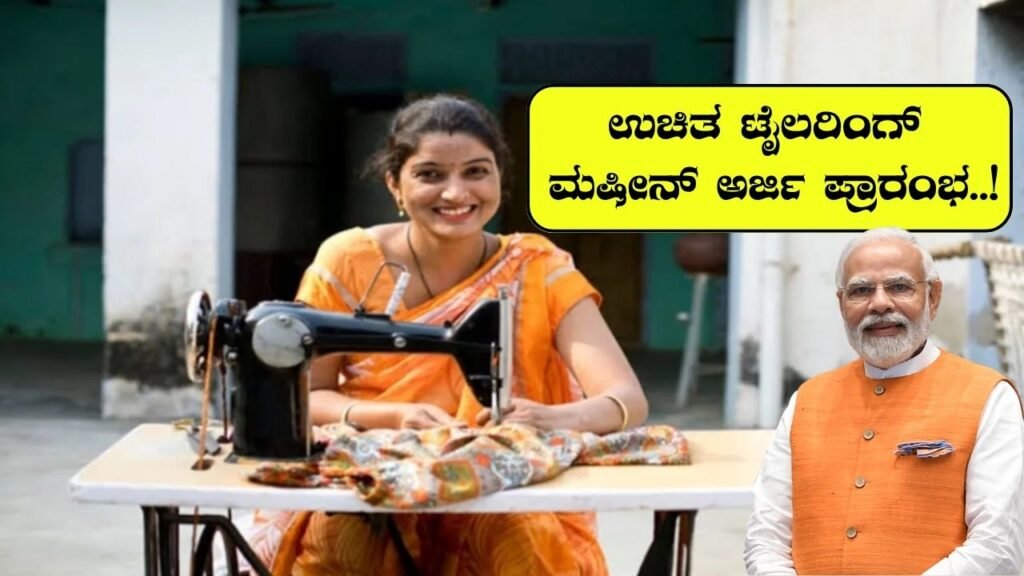Introduction
In India, initiatives like the Free Sewing Machine Scheme (also known as Free Silai Machine Yojana or Shilai Mashin Yojna) have emerged to foster economic independence among women, particularly those from low-income, marginalized communities. Across states, this program aligns with broader goals of self-employment, poverty reduction, and gender equity.

Objectives and Purpose
The primary aims of the scheme are:
- Enable self-employment and income generation: By providing sewing machines or financial assistance, the scheme helps women start tailoring services from home, thereby contributing to household income
- Promote financial independence: Especially for widows, single mothers, differently-abled women, and rural homemakers with limited mobility or resources AS-
- Support local economies: Tailoring is a skill that can be applied locally, using modest inputs like fabric and threads, which in turn benefits allied micro-enterprises AS-
- Skill development and empowerment: Many states offer basic training to improve tailoring quality and create confidence among beneficiaries
Eligibility Criteria
While criteria vary by state, common eligibility conditions include:
- Demographics: Indian women, typically aged 20–40 years (some states extend up to 45)
- Economic status: From Below Poverty Line (BPL) or Economically Weaker Sections (EWS), with annual household income generally below ₹1.5-2 lakh (varies by state)
- Special priorities: Widows, differently-abled individuals, single mothers, and destitute women often receive preference
- Exclusions: Applicants should not already own a sewing machine or have received one under a similar program
Required Documents
Applicants usually need to submit:
- Identity and residence: Aadhaar Card, Ration Card, or other proof of residence
- Income and age proofs: Income Certificate, Birth Certificate or Aadhaar
- Other documents: Bank account details for transfers, passport-size photos, and where relevant, caste or disability/widow certificates
Benefits and Suppor
Depending on the state, beneficiaries receive:
- Sewing machine or tailor kit free of cost, or financial assistance up to ₹15,000
- Free tailoring training, ranging from a few days to a few weeks, to enhance stitching quality
- Access to loans or subsidies for equipment upgrades, or additional tailoring inputs
- Economic empowerment: Many beneficiaries report earnings ranging from ₹2,000 to ₹15,000 per month, depending on workload and locality
Application Process
Process varies slightly across states:
- Online: Applicants in several states (e.g., Karnataka, Maharashtra, UP) can apply via official portals like sevasindhu.karnataka.gov.in, mahaonline.gov.in, up.gov.in
- Offline: In rural areas, forms can be submitted through Gram Panchayats or District Women & Child Development offices with physical document verification
- Verification & Distribution: Authorities authenticate documents, and beneficiaries are notified to collect machines from assigned centers—delivery may take a few weeks post-approval
Success Stories and Impact
- Local entrepreneurship: Women in Haryana, Rajasthan, Bihar, and MP have used the machines to stitch uniforms, curtains, and clothing, generating significant supplementary income
- Community upliftment: Some beneficiaries opened stitching hubs or trained other women, fostering community-level empowerment
- Tailoring as liberation: A user recalled how government-provided sewing machines helped many women “stabilise their lives with these humble machines,” signifying its role in improving autonomy
Challenges and Recommendations
- Awareness gap: Lack of visibility in remote areas keeps many eligible women uninformed
- Implementation issues: In some cases, delays, unofficial charges, and limited resource allocation hinder impact
- Suggestions for improvement: Expand outreach, ensure transparency, pair machines with stronger training and market linkages, and monitor disbursement efficiency
Conclusion
The Free Sewing Machine Scheme stands out as a meaningful government effort to empower women through livelihood tools, combining economic aid with capacity building. Through thoughtful implementation and greater awareness, it holds the potential to create sustainable and dignified self-employment, particularly for India’s marginalized women—progress that is not only stitch-by-stitch but also step-by-step toward inclusive growth.
